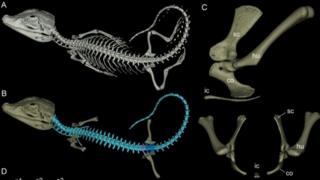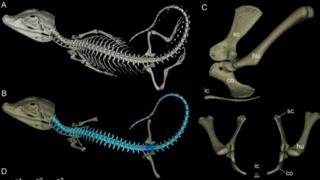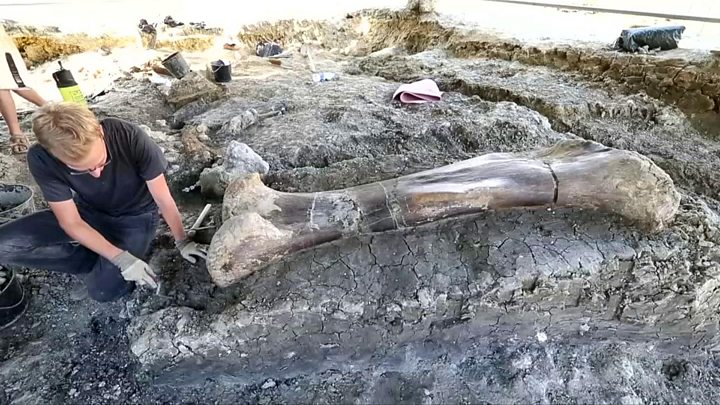Giant prehistoric caiman had extra hip bone to carry its weight
Purussaurus mirandai could grow to 10m in length and was able to move on land, scientists believe. …

 Image copyright Torsten Scheyer/PA Wire
Image copyright Torsten Scheyer/PA Wire A prehistoric caiman, which weighed up to three tonnes, had an extra hip bone and upright shoulders to help it carry its weight on land, scientists say.
Purussaurus mirandai could grow up to 10m (32ft) in length and lived in the swamps and rivers of what is now Venezuela.
An international team of scientists says its extra vertebra and shoulder alignment meant it could move on land.
Their study was published in the online journal eLife.
The team, led by Dr Torsten Scheyer of the Palaeontological Institute and Museum of Zurich, studied fossils found in the badlands of Venezuela.
They found that the now-extinct giant caiman had an extra vertebra in its sacrum, the lower part of its spine. Its shoulder girdle was also aligned with the action of gravity, allowing it to better move its massive weight.
“Our findings are important because they help show how development can be altered in order to enable biomechanical changes as animals evolve into larger body sizes,” Prof John Hutchinson of The Royal Veterinary College in London said.
Dr Schreyer said the discovery “broadens our knowledge of what animals can do in evolution”.
“These old bones show us once again that the morphological variation seen in animals that are long extinct extends well beyond that of what is known in living animals,” he said.
Purussaurus mirandai is the only crocodylian that has been found to have the extra vertebra in its sacrum, the scientists said.
You may also be interested in:

Media playback is unsupported on your device


